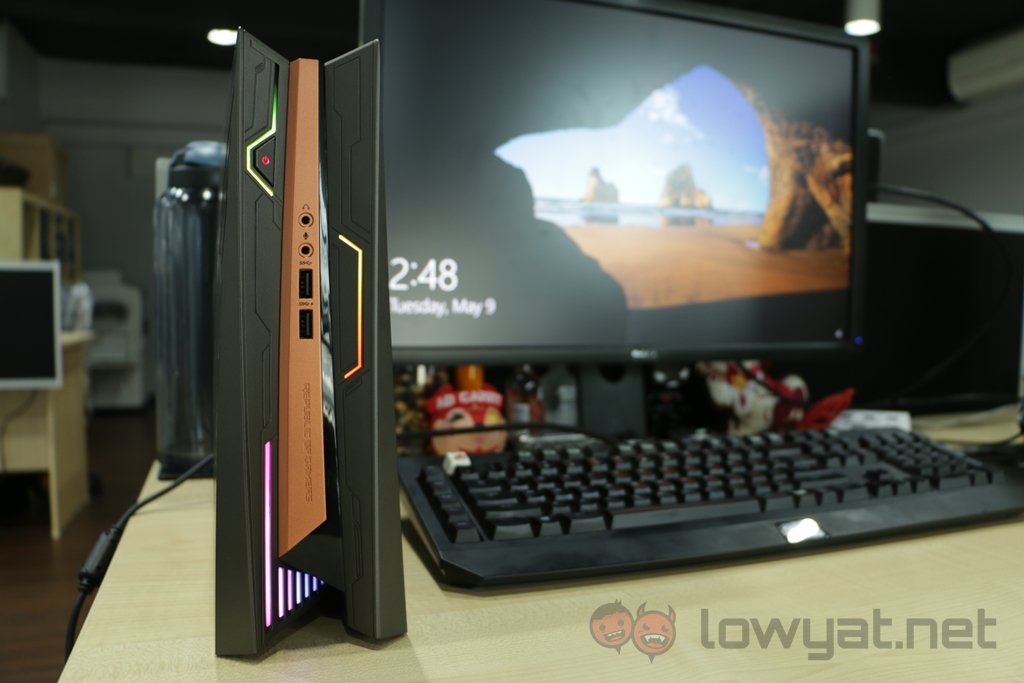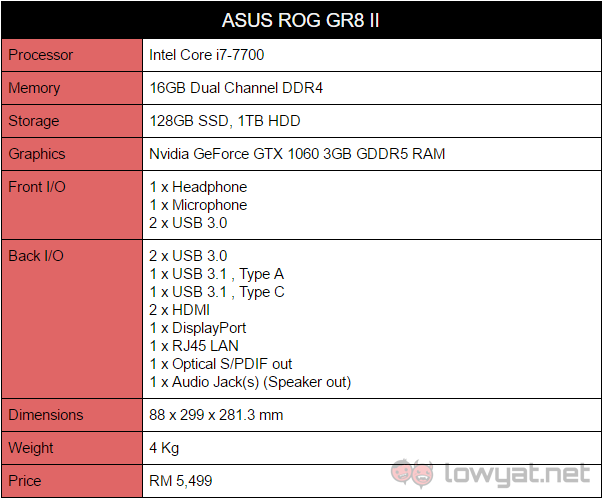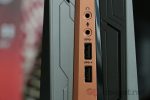Asus is back with a small form factor gaming desktop, the ROG GR8 II. It isn’t a top of the line gaming rig; instead, taking on the specifications of something more budget friendly. Catering to the more modest gamer is not necessarily a bad thing – not everyone is able to afford the biggest and baddest hardware. Some of us just make do with what we have.
Before beginning this review, I would like to point out that the unit we were sent was an engineering sample. That means the benchmark scores may not reflect that of a final retail unit.
Specifications (retail version)
Design
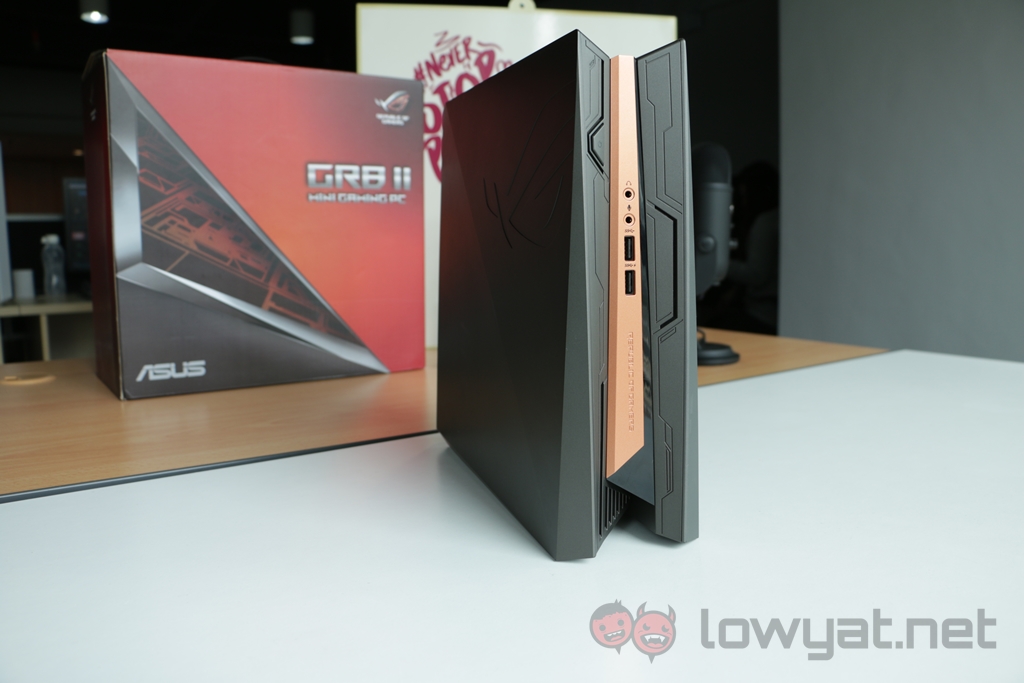
Asus has gone with a futuristic sci-fi aesthetic for the ROG GR8 II. The trapezoid chassis features numerous faux panel lines along the central axis. The sides contrast these elaborate designs by taking a minimalist approach, with only the barest possible adornments. On the left is ROG’s trademark swept lines, while the right features a centrally located glossy triangle.
As is the trend with modern gaming rigs, the ROG GR8 II also features its own set of RGB lighting. This is done in a more tasteful way, only appearing as piping on the front of the machine. Naturally, there’s the option to control the lights and switch between 12 different display modes. It’s still just RGB lighting though, and nothing anyone hasn’t seen before.
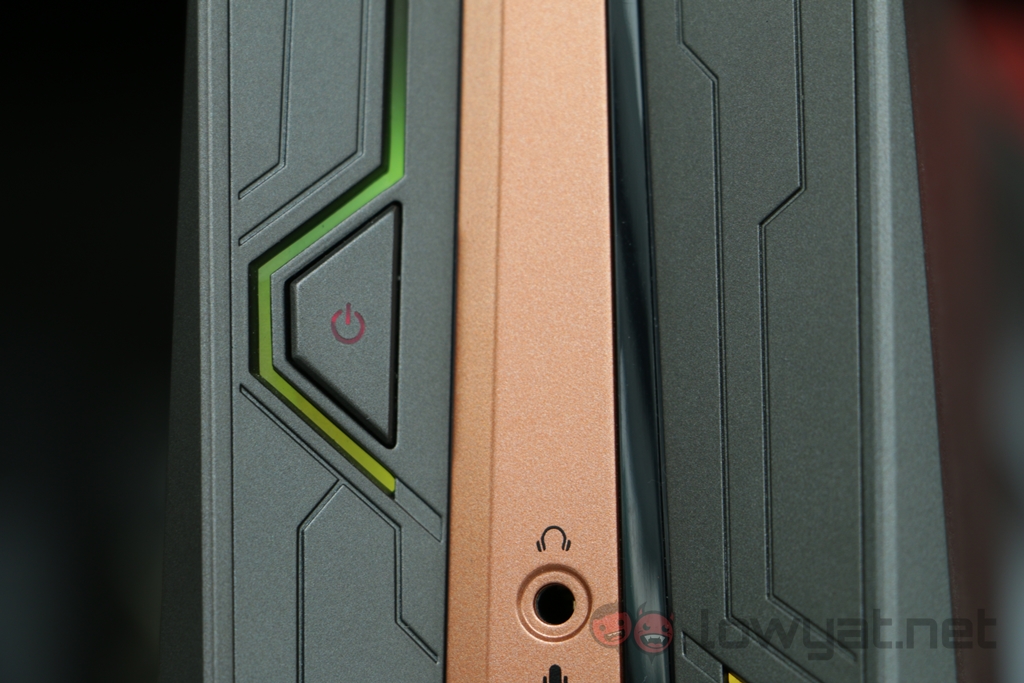
Aside from that, Asus has designed the ROG GR8 II to have a minimal footprint. It barely takes up any space on a desk, and should neatly fit into most setups. Some consideration was also put into the idea that this would be ideal for transporting to LAN parties, which seems apt. It’s easy to carry and, just as importantly, the small form factor leaves more space for snacks on the table.
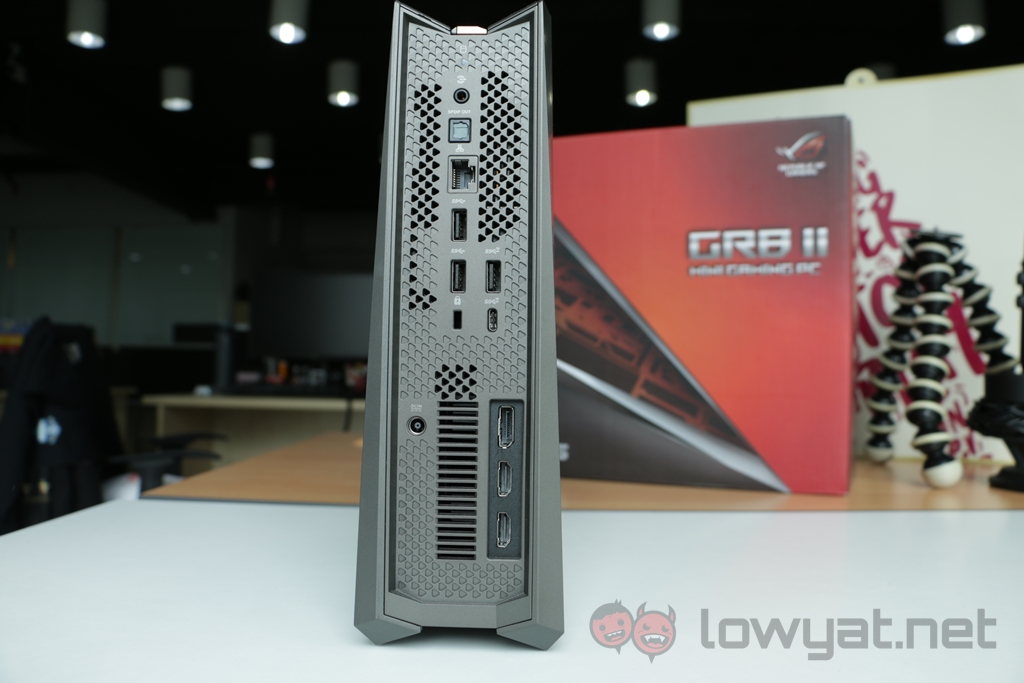
On the inside, the ROG GR8 II is about as compact as one would expect. There’s not much space for expansion, as every available inch is crammed with hardware. Accessing this hardware is easy enough, as the arrangement leaves the RAM and storage devices close to the surface. That’s all that really matters for upgrading this sort of machine.
Asus’ adherence to the current trend of using laptop power bricks as the power supply is perhaps a minor pet peeve of mine. Yes, it saves a lot of space and allows for a smaller computer. But, it adds a piece of equipment that is much harder to replace in the event that something stops working. Asus is not the only company adopting this design choice; which is not a good thing.
Benchmarks
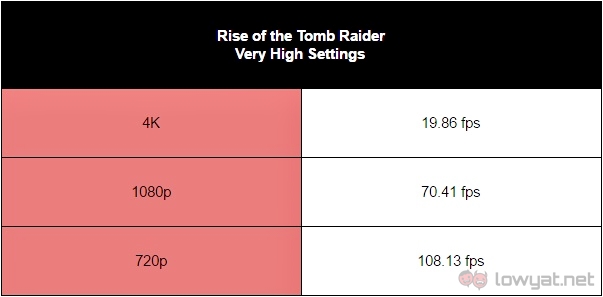
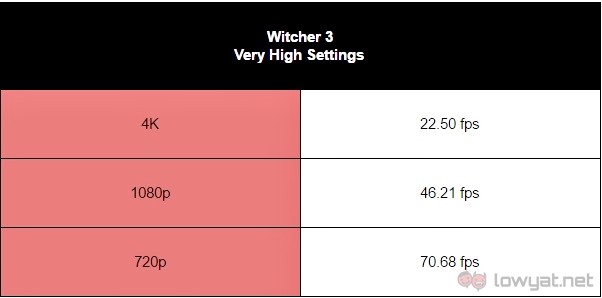
As expected, the GTX 1060 can’t quite handle 4K gaming. At least not with the graphics turned up to maximum as we usually try to do. However, it can provide an acceptable frame rate at Full HD, even hitting the magic 60 fps in Rise of the Tomb Raider. It would be asking a little too much for the poor 1060 to reach that number with The Witcher 3.
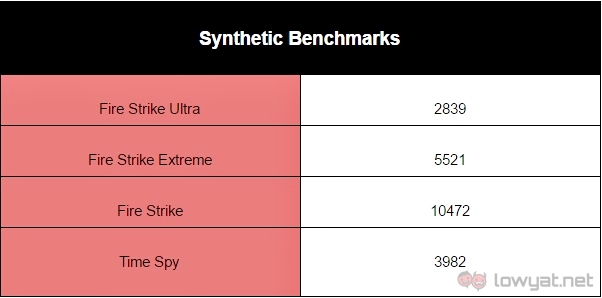
The synthetic benchmarks only prove that the GR8 II is fine for gaming at Full HD. The Fire Strike Extreme benchmark is perfectly fine; and the numbers show that gaming at 720p will be just fine. Especially if you aren’t like us and trying to discover the limits of the system.
Competition
Acer Predator G1-700
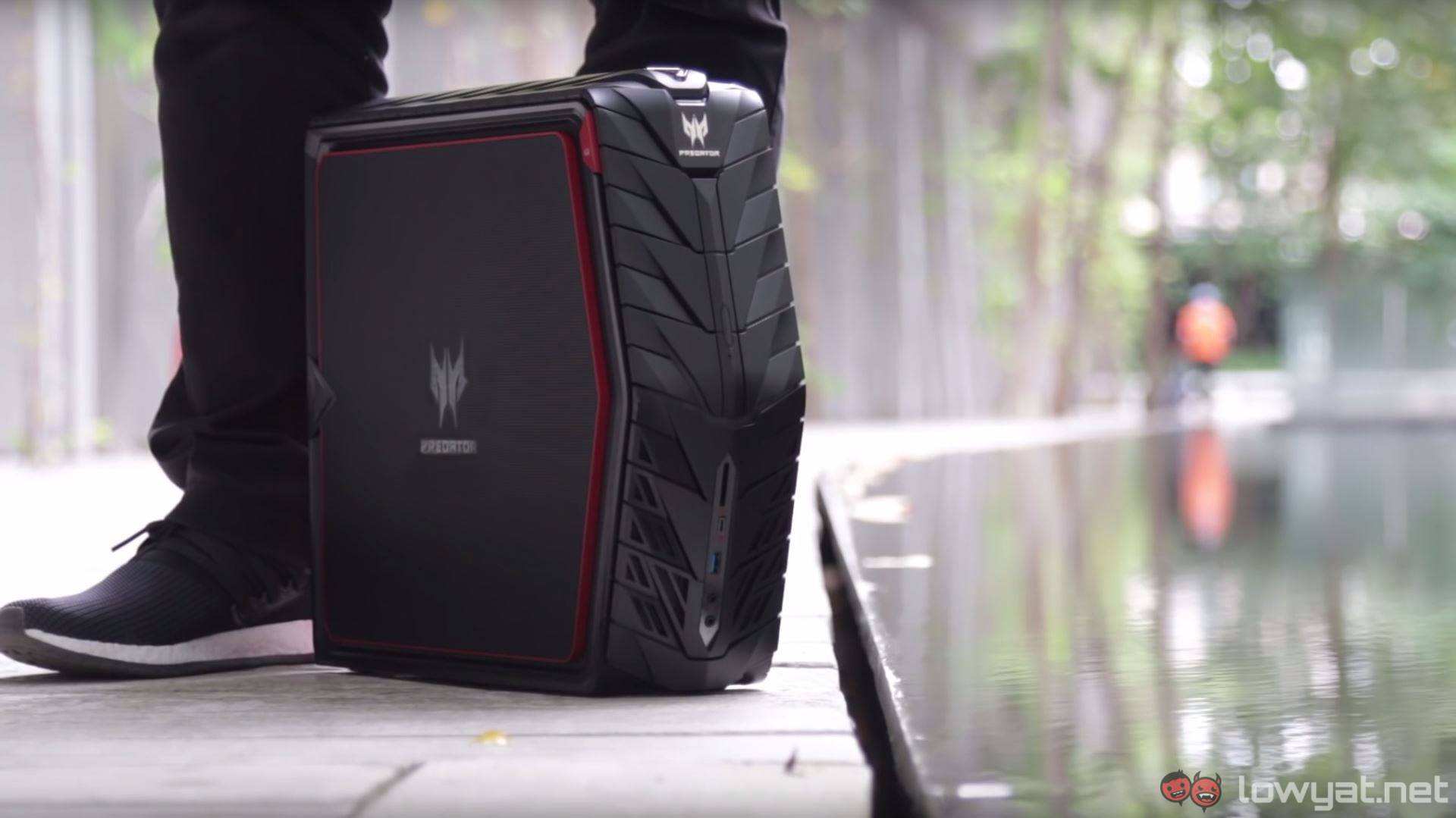
Small form factor gaming machines aren’t all that common at the moment, limiting the amount of competition that goes here. Unfortunately, the closest competitor we have for the Asus ROG GR8 II is the Acer Predator G1-700. Acer’s effort is a powerhouse compared to what ROG has put out; although both occupy different ends of the spectrum.
The difference between the two is stark, with the Predator fitted with a GTX 1080 and 16GB RAM. It also weighs in at RM10,999; which is a pretty penny compared to the far more modest ROG GR8 II which retails for almost exactly half that price. At this point, it really is all about how much you’re prepared to pay for what is effectively a Steam Machine.
Conclusion
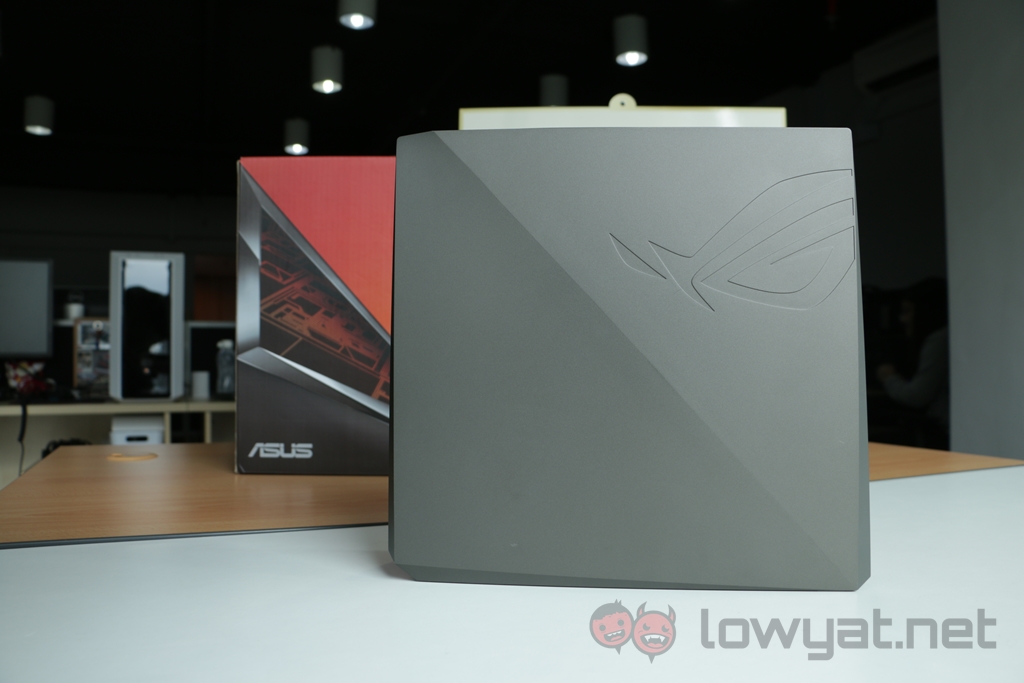
All in all, the Asus ROG GR8 II is a fine gaming machine, though there is a small price to pay for the tiny form factor. It’s more of an entry level rig, and will be able to handle most modern games with no problem. The addition of the GTX 1060 gives it quite a bit of graphical punch. Really nothing to sneeze at as far as getting into gaming goes.
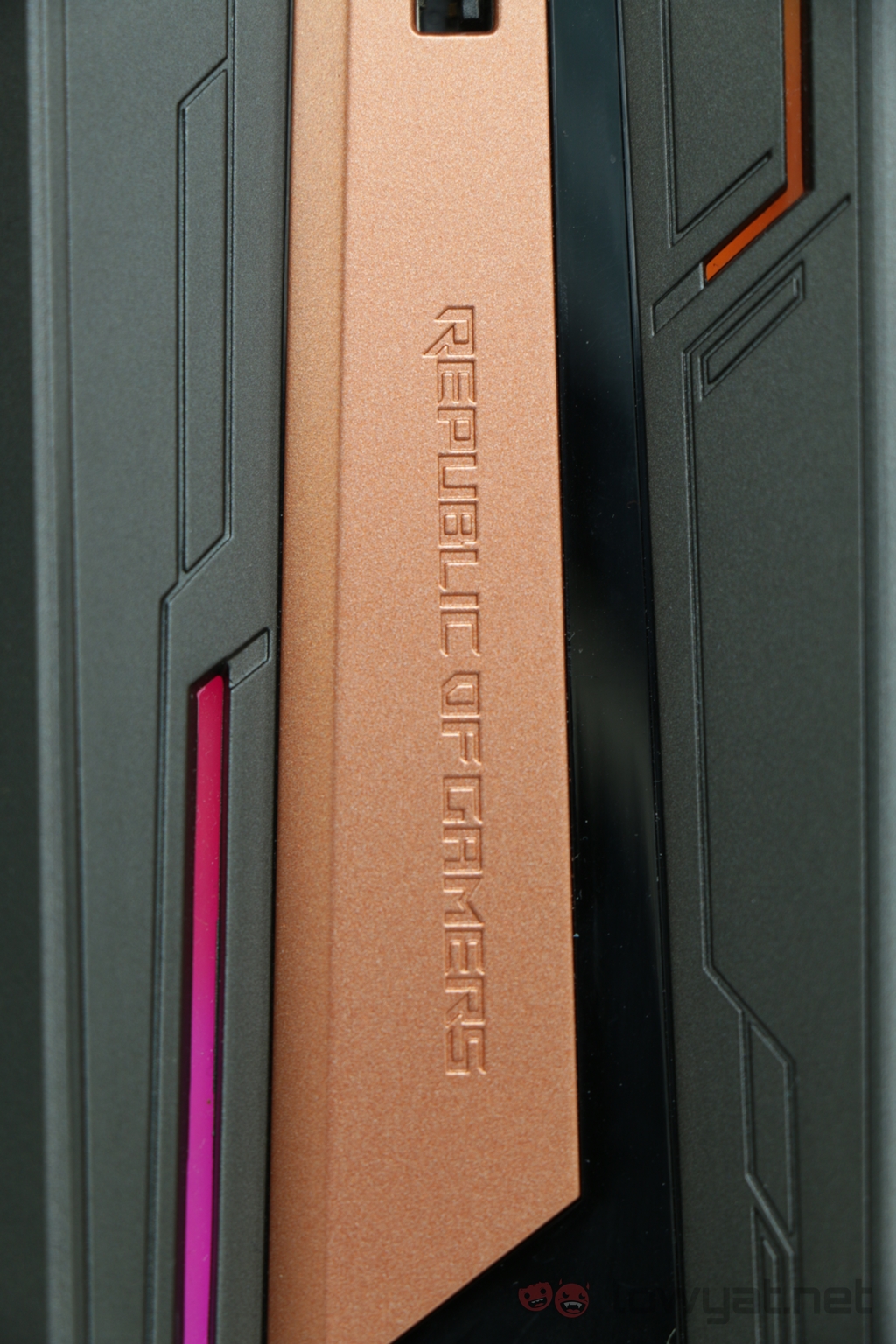
The small size is suitable for places with limited space; and it is technically a Steam Machine without the branding. But more importantly, the ROG GR8 II wouldn’t look too out of place in the living room; perhaps taking the place of a more traditional console (which is perhaps what Asus is going after in the first place).
After all, it does everything that consoles do; and more. Not to mention the fact that the inclusion of the seventh generation Core processor also allows it to output Netflix in 4K.
Follow us on Instagram, Facebook, Twitter or Telegram for more updates and breaking news.


